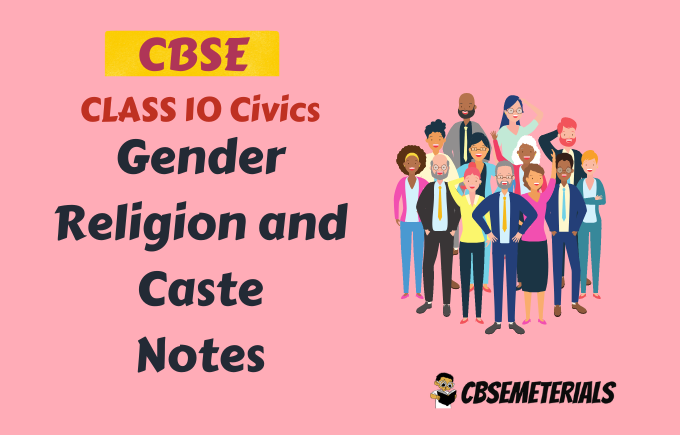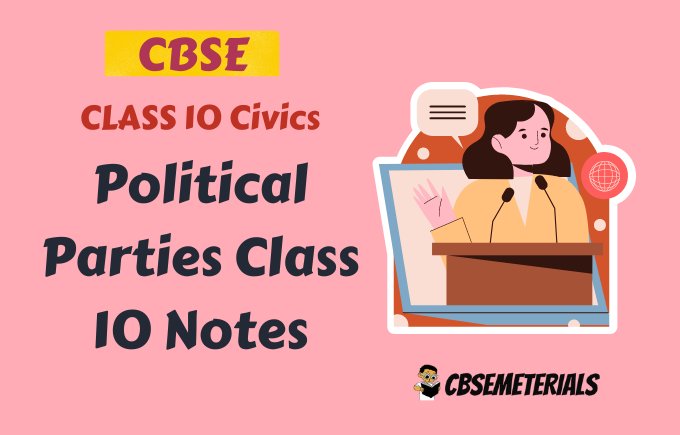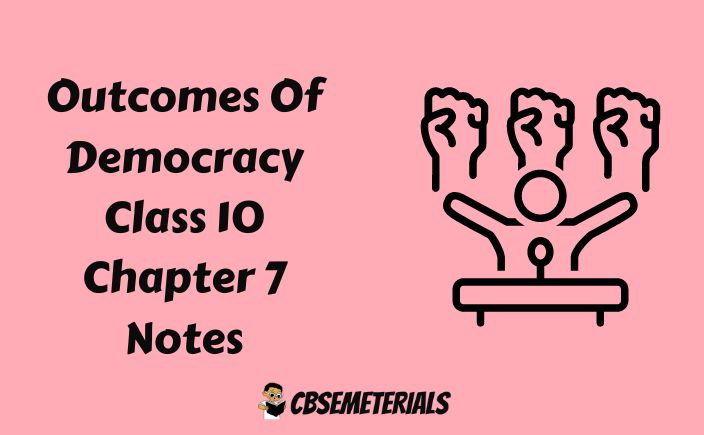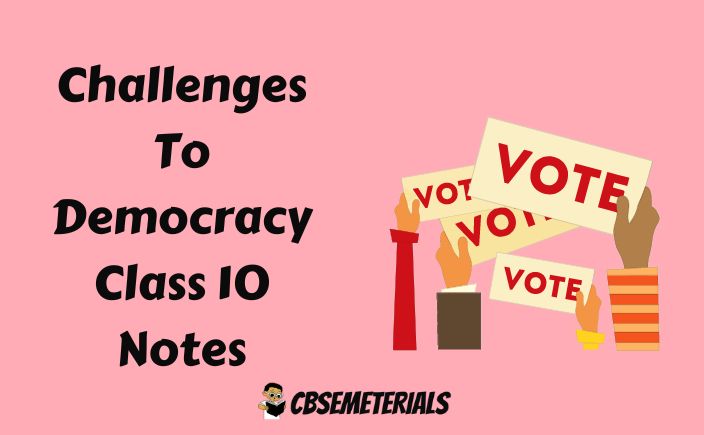Hello Guys My Name is Ayan From CBSEMeterials – Free CBSE Study Meterials and Today I am going to share Federalism Class 10 Notes For Free Which Helps you in Getting Good Marks in Class 10 Civics Chapter 2 Notes. You can also download Democracy and Diversity Class 10 Notes Pdf For Free of Cost. So without further ado, let’s get to the Civics Class 10 Chapter 2 Notes
Quick Review
- Racial discrimination against African-Americans was the focus of the US Civil Rights Movement. Martin Luther King Junior served as its leader.
- Smith and Carlos, two African-American athletes who won the gold and bronze medals at the Olympics, attempted to raise awareness of the racial prejudice that is practiced against Africans in America by staging a protest at the award ceremony.
- The difference in a group of individuals caused by their ethnicity, religion, language, or culture is referred to as a social difference.
- A social division results from the combination of two or more social inequalities.
- In the United States, the inequalities between Blacks and Whites led to social division.
- A democracy is a kind of government that is run by, for, and by the people.
- Competition between diverse political parties is a feature of democracy. Any community becomes divided by their rivalry.
- Politics and social decisions are heavily influenced by three factors:
- The result relies on how individuals view their identities.
- How political leaders address community requests will determine the outcome.
- Depending on how the government responds to various parties’ demands
- If a positive attitude toward variety is maintained, political expression of social division in a democracy is fairly common and can even be beneficial.
- In a homogeneous society, everyone shares a common religion, culture, and language.
- The Indian social structure is multifaceted.
- To combat racism, the Black Power Movement was launched in the USA in 1966 and lasted until 1975.
- Those Africans whose ancestors were transported to America as slaves between the 17th and the early 19th century are referred to as afro-Americans.
- The largest democracy in the world is India.
- The democratic system in India is a parliamentary one.
- The union and state governments are given different levels of authority under the Indian Constitution.
- In the late 1960s and early 1970s, Black Power was a political movement that sought to express a fresh racial consciousness among Black Americans.
- Migration is the movement of individuals across borders or from one location to another in search of work or for other reasons.
- A country that is homogeneous becomes heterogeneous due to migration.
Flowchart
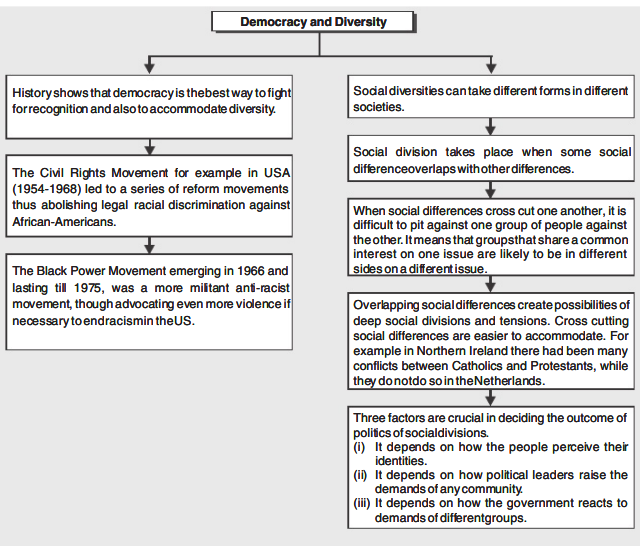
Glimpses of India Summaries
Important Terms of Democracy and Diversity Class 10 Notes
- Democracy: The representatives chosen by the electorate create a government. Democracy, then, is a system of government that is run by, for, and by the people.
- Homogeneous Society : a community where the types of individuals are similar, especially when there are few noticeable ethnic differences.
- Migrant: anybody who moves, frequently for job or other economic possibilities, from one country or region to another within the same country or to another country.
- Civil Rights Movement : Martin Luther King Jr. started a nonviolent movement to combat the racism that was being practiced against Black African-Americans in the US.
- African-American : Africans who were taken to America as slaves during the 17th and early 19th centuries and their descendants.
- Black Power : The Black Power Movement began in 1966 and continued until 1975. It was an aggressive, racist movement that called for using violence to eradicate racism in the US.
- Racism : a practice of treating people of different races unfairly.
- Atheist : a person who do not believe in religion or God.
- Overlapping Differences : We refer to social differences that cross over with other social differences as overlapping differences.
- Cross-cutting Differences : Cross-cutting differences are those that affect multiple aspects of society at once.
- Minority : communities where the population is less than 50% of the national average.
- Forum : The forums refer to the lower courts.
- Social Differences : societal diversity that varies from one society to another.
- Discrimination : treating someone or a certain segment in society unfairly more often than often.
- Multicultural Community : Multicultural communities are social groups created as a result of many cultural influences. Typically, migration is the cause of this.
- Social Division : society is divided based on factors such as caste, race, religion, language, area, sex, etc.
- Disintegration : breaking down into smaller pieces.
Conclusion
Thank You for Reading Democracy and Diversity Class 10 Notes. I Hope the Class 10 Civics Chapter 3 Notes Created by CBSEMeterials.com Team May Found Helpful for Your Class 10 Exam Preparation. If Found Any Error or Suggestion Please to Let Us Know
